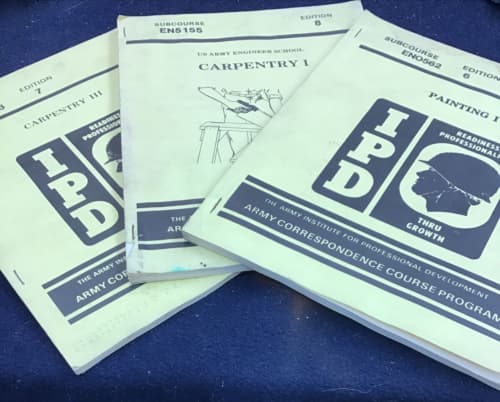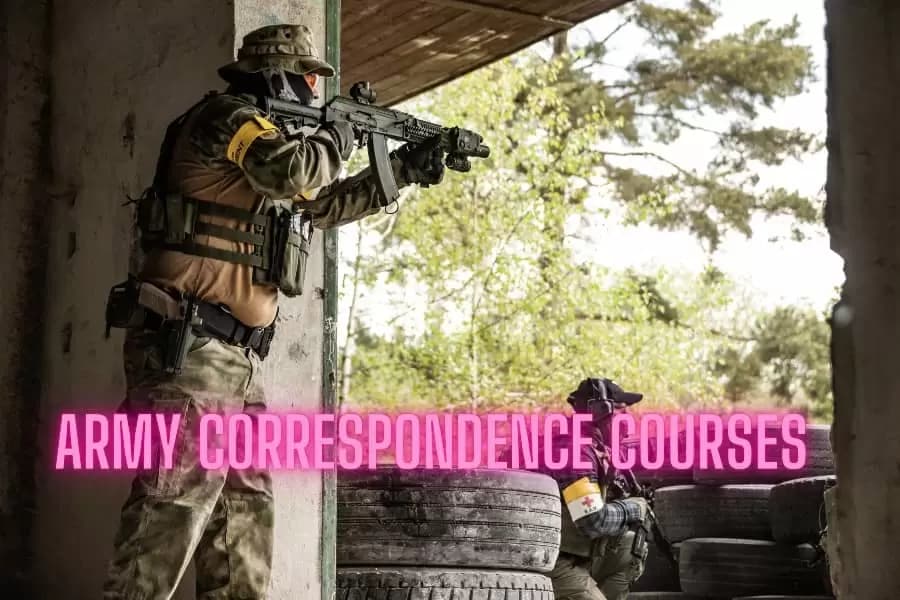Whether you are a current member of the Army or you are preparing to join the Army, you will want to make sure you understand the Army Correspondence Course Program. The correspondence program allows you to earn points by doing courses. These points can help you achieve your rank, and you can use these points for any training you want to do. This includes the Army Basic Training course, the Army Advanced Individual Training course, and the Officer Candidate School.
An Army correspondence course is a good way to get additional education and hone some skills. There are many options available to military personnel. The best course for you may be the one that your first-line supervisor recommends. This will give you a clearer idea of what is best for your specific situation.
What is correspondence in the army?
The Army’s distance learning program (DLP) is designed to provide tailored, distributed training to soldiers on a variety of subjects. The DLP is an education and career program that is ideal for military members with busy lives. There are a number of accredited colleges and universities that offer distance learning programs for the military. You can also register for classes via podcasts. The DLP has many courses available, from college-level courses to vocational career training. The DLP has many schools to choose from, including the DANTES-sponsored educational providers.
While at it, check out the Army Training Support Center, which offers individual and group study. The center is the best place to start your search, and the DLP website provides an impressive list of available programs. The DLP website also has a course selection calculator that can help you decide on the right course.
It’s also a good idea to check out the ATRRS Training Record to see if your coursework has been credited. If you have yet to get a confirmation email, your enrollment may be incomplete, or you may not have met the pre-requisites.
It’s a good idea to check out eArmyU, which provides military personnel with free online personal development and career training. The eArmyU site also has a small library of military-centric books. You can also take college-level courses while on leave. eArmyU provides a well-rounded education that allows you to get the most out of your military experience.
The best part of taking an Army correspondence course is that you can get credit for it. You can use your post-9/11 GI Bill to reimburse you 55% of the approved cost of your tuition.
How do you get Army correspondence courses?

Taking Army correspondence courses can be a good way to enhance your skills and prepare for a new career. If you need more clarification about the benefits of this training, check with your first-line supervisor. He or she can recommend the most relevant course for your situation.
There are several different ways to take Army correspondence courses. For example, there is the Soldier Education Management System (SEM), which allows soldiers to earn credits. Another option is eArmyU, which allows military personnel to take college courses on their off-duty time. Both options require a lot of self-motivation and good time-management skills.
To qualify for promotion points, a Soldier must complete a full course and earn a certificate of completion. Some courses will give a soldier the opportunity to earn a CDC end-of-course test point. These points will help you improve your overall score.
The Army Correspondence Course Program (ACCP) is an extension of the US Army Training and Doctrine Command curriculum. This program is designed to provide progressive, distributed education to the United States Armed Forces. This program is a formal non-resident extension of the US Army Service Schools curricula.
The Army’s e-Learning program, which is available through ATRRS Self-development, provides online learning opportunities for soldiers. This program offers individual and group study. e-Learning programs are more challenging than classroom instruction, however.
In order to take advantage of the most important benefits of e-Learning, a student must be able to work independently and have a good time-management skill. In addition, a learner must be self-motivated to keep up with the pace of an online class.
The Army Institute for Professional Development updates the ACCP curriculum annually. Each Army Service School publishes a catalog that lists the course titles, subject matter, and the total credit hours of the course.
The best course for a military member is the one that your first-line supervisor suggests. You should also read the confirmation email that you receive when you enroll. This will tell you the name of the class, the URL for the course, and the pre-requisites.
What is the max for Army correspondence courses?

Taking correspondence courses is a way to earn promotion points. There are three types of correspondence courses. Depending on the course, you can earn between one and five points per hour. You will need to check with your first-line supervisor or unit commander to determine what type of correspondence course will be the best for your needs.
Two categories of correspondence courses may earn promotion points: civilian education and military education. In addition to the point credit for correspondence courses, a student can also earn promotion points for college credits. This means that a week’s worth of college classes can be worth promotion points.
A soldier can earn up to 78 points through Army correspondence courses. During a “normal” year in the Reserves, a person can get up to 366 points. This amount of points is equivalent to a full year of active duty service. However, some branches limit the number of points they accept for correspondence courses.
If you are a member of the National Guard or the Reserves, you must have at least twenty years of qualifying service before you can receive credit for correspondence courses. You can pay for your course or do it on your own.
You can earn up to 75 points for civilian education if you are a SGT or SSG. If you are not, you can earn up to 80 points. Typically, you will earn points for every three hours of study in a qualified correspondence course.
If you are a member of another service branch, you should check with your first-line supervisor to see if you can earn additional points through upgrade training. If you are on active duty, you can earn up to 365 points per year. You will receive one point for each three hours of study in a correspondence course.
You can also take college-level tests to get up to three promotion points. These include DANTES Subject Standardized Tests and CLEP exams. Most of these tests are worth three college credits.
How many points are Army correspondence courses wo
Whether you are looking for a better score or you are going for promotion, Army correspondence courses can help you gain a competitive edge. They are also a great way to save money on campus-related costs. In fact, the time commitment required to complete an Army correspondence course can be as low as five hours. However, it is important to remember that you can only receive promotion points if you have completed the full course.
The points that you can earn through correspondence courses depend on the nature of the course. Some are limited to specific ranks or MOS. You will have to talk to your first-line supervisor to find out more about which correspondence courses are eligible.
The Army offers several professional military education courses that are worth points. You can earn up to 80 points, depending on the course you choose. A certificate of completion is required to earn points. You can also earn up to 75 points by completing a college course. You can even earn up to four points a week by passing an Army course. You can also take online training through Skillsoft.
Another way to earn points is by participating in volunteer activities. For example, you can participate in the Soldiers eLearning Program or volunteer at schools. You can earn up to 10 points if you make the Commandant’s list. You can also earn points for making the CDC end-of-course test.
The number of points you can earn will depend on your experience and the category of training you are taking. For example, a SGT E-6 is allowed to earn 145 points through APFT. This is 23% of the 800 points that are awarded.
You can also earn points through the Army’s NCOPDS (Nonresident Computer-Based Training) system. The system ensures that all enlisted members are equipped with the skills needed to lead. The maximum amount of points you can earn is 365. This is equivalent to a full year’s active duty service.

